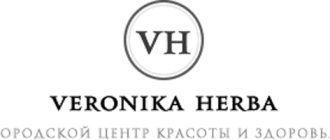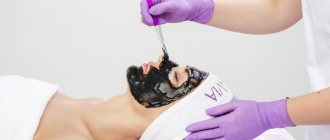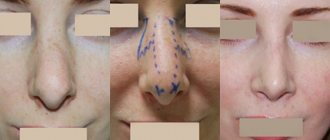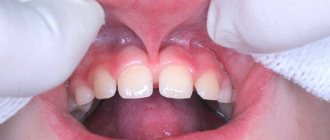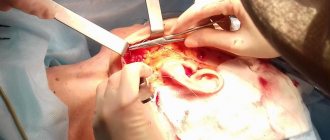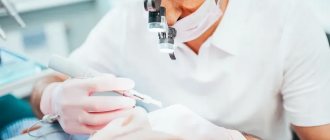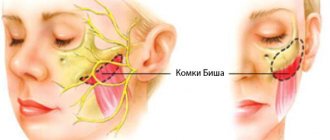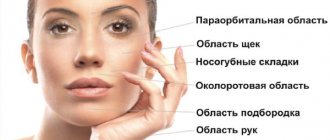The term collagen comes from the Greek words kolla (glue) and genes (generative). It is a component of connective tissue and is present in the skin, bones, ligaments, cartilage, tendons and blood vessel walls. Connective tissue performs the main protective and support functions in the body, determining the physiological characteristics of all organs and structures. The collagen contained in this tissue is a protein filament. This is the main component of the intercellular substance, the matrix, filling the space between cells and organs.
What is collagen
The skin, as you know, consists of several layers: epidermis, dermis and subcutaneous fat.
AZT and PRP therapy are aimed mainly at the dermis, which is responsible for the thickness and elasticity of the skin; a huge number of parallel processes of synthesis and breakdown occur in the dermis. It is better to try to influence this activity, having a good understanding of the pathogenetic mechanisms occurring in the skin.
The main component of the dermis is collagen , an organic compound from the group of fibrillar proteins. The papillary layer of the dermis is formed by smaller bundles of collagen fibers, it is dominated by a large number of cells (fibroblasts, fibrocytes, mast cells, T-lymphocytes), while the reticular layer is characterized by larger bundles that form a characteristic network that provides strength to the skin, hence The name of the layer is mesh.
Collagen:
- Main protein of dermis
- The fibers are intertwined into a right-handed helix consisting of three polypeptide chains
- Produced by fibroblasts and broken down by collagenase
- Provides firmness and elasticity to the skin
Three effective measures to maintain healthy and tight skin without the services of a cosmetologist
People with elastic skin look younger. Not only cosmetics help maintain its elasticity, but also compliance with some simple rules:
- Drink more water
. Dehydration is one of the main enemies of glowing and tightened skin. It negatively affects many life processes. Drink plain water and avoid flavored sugary drinks. - Exercise regularly.
Take a walk through the forest, bike to the store, and end the day with a light jog in the evening. Physical exercise stimulates the production of serotonin, increases overall tone and strengthens muscles. - Control your stress and get enough sleep.
High amounts of the stress hormone cortisol deprive the body of essential nutrients important for the immune system, regulated digestion and glowing skin. During sleep, the skin is restored and tightened. If you don't get enough sleep, your skin loses its healthy shine and elasticity.
These tips will help you look good, but will not compensate for the lack of collagen. Therefore, methods of collagen replenishment should be considered in parallel.
Collagen synthesis
Fibroblasts are the main cells of the dermis that produce both collagen and other proteins and some enzymes. At different periods of a person's life, the dermis undergoes changes. Thus, at a young age it is characterized by high fibroblast activity and consists of small bright red bundles of collagen fibers. With age, the activity of fibroblasts decreases, their number decreases, bundles of collagen fibers thicken and acquire a pale pink color.
The collagen molecule consists of three polypeptide chains, twisted in the form of a right-handed triple helix and consisting of amino acid residues (usually glycine, proline and lysine residues). The three-helical structure of collagen gives the molecule strength.
At one end, the molecule is cross-linked from lysine residues, which gives the fibers a high degree of elasticity.
Hormones play a special role in regulating collagen synthesis . Glucocorticoids inhibit collagen synthesis, which is manifested by a decrease in the thickness of the dermis, as well as skin atrophy in areas of prolonged administration of these hormones (Zöller et al.).
Collagen synthesis is also influenced by sex hormones, receptors for which are found in fibroblasts. Collagen synthesis is dependent on estrogen content, which is confirmed by the fact that in menopausal women the collagen content in the dermis decreases (Calleja-Agius et al.).
Neocollagenogenesis: physiological mechanism and effectiveness of procedures
Ilya Kruglikov DOCTOR OF PHYSICAL AND MATHEMATICAL SCIENCES, WELLCOMET GMBH, GERMANY
Les nouvelles esthetiques 5/2013
Neocollagenogenesis, or the formation of new collagen, is one of the key concepts in aesthetic medicine. This is due to the important role that collagen plays in the mechanical and structural properties of connective tissue. Therefore, neocollagenogenesis is often considered as the main goal of various non-invasive and minimally invasive treatment methods in aesthetic medicine.
The results of treatment are interpreted as follows: any improvement in skin condition - reduction of pores, reduction in the depth and number of wrinkles, increase in turgor - is explained by local stimulation of neocollagenogenesis in the skin. This applies to almost all hardware rejuvenation methods, such as laser, IPL and LED methods, as well as methods based on the use of high-frequency currents, ultrasonic waves and their combinations.
The statement that the use of fundamentally different physical factors leads to an impact on the mechanism of neo-collagenogenesis is not accidental. Proponents of each of the mentioned methods claim to obtain a prolonged result, which is theoretically possible only if after the procedure it is possible to achieve compaction or at least a significant renewal of the structural network of mature insoluble collagen in the intercellular matrix.
This concept is based on the results of fundamental research, which have shown that with chronological aging, the collagen content in the skin constantly decreases, and its destruction can be further enhanced by photo-induced aging or repeated remodeling of connective tissue.
Thus, in aesthetic medicine, neocollagenogenesis is presented as a nonspecific reaction of fibroblasts, for example, to changes in temperature or pressure in the connective tissue, and it is assumed that this effect occurs even with slight deviations of parameters from their normal values. In principle, this is possible. But with a more detailed study of this phenomenon, a number of problems arise that contradict the laws of collagen metabolism known from fundamental research.
MAIN CONTRADITIONS
Changes in the collagen content in connective tissue depend both on the number of fibroblasts present in it and on the intensity of the processes of collagen synthesis and breakdown. These processes correlate with each other through feedback mechanisms and are characterized by different durations. As a result, certain contradictions arise regarding the real role of neocollagenogenesis in improving the structure of the skin after the use of non-invasive or minimally invasive methods of aesthetic correction. To understand these contradictions, let us consider a number of features of neocollagenogenesis.
Self-regulation of the extracellular matrix
The processes of collagen synthesis in connective tissue are associated with the processes of its breakdown through a feedback mechanism. Any stimulation leading to increased production of collagen by fibroblasts simultaneously causes destruction of newly produced collagen (mainly through stimulation of matrix metalloproteinases, MMPs). Therefore, under physiological conditions the system is in dynamic equilibrium. If the breakdown processes are completely disabled or partially disabled due to some pathology, an uncontrolled increase in collagen content in the skin may occur. However, most of the newly synthesized collagen soon breaks down again. This process, however, can be minimized if a special strategy is applied: stimulate the synthesis of new collagen and simultaneously suppress the synthesis of MMP.
Self-regulation processes operate at all stages of collagen synthesis, but they are controlled differently and have their own dynamics at each stage. To correctly interpret the clinical results obtained after applying certain aesthetic procedures, it is important to first find out which stage of collagen synthesis is meant - the formation of procollagen or the assembly of mature collagen.
Stages of collagen synthesis
Three stages of collagen synthesis can be distinguished: activation of messenger RNA (mRNA), formation of procollagen and assembly of mature collagen.
Increasing the amount of mRNA can be relatively simple, but this will not directly increase procollagen turnover in the tissue. The synthesis of the triple helix (procollagen) occurs in fibroblasts. Having been released from there into the extracellular matrix, procollagen is again decomposed by enzymes. Only a small part of it is converted into the so-called assembled (mature) collagen with multiple cross-links, due to which it is very resistant to the action of enzymes. It is important to remember that only stable mature collagen, and not unstable procollagen, ultimately determines the mechanical properties of the skin. The three stages described differ significantly in dynamics and have different half-lives. These periods differ from each other by an order of magnitude. Thus, a paradoxical situation arises: the response time of the extracellular matrix, consisting mainly of mature collagen, far exceeds the time limits within which, as a rule, the result is observed after one corrective procedure.
In almost all experimental and clinical studies conducted, the content of either mRNA or procollagen is measured in tissues, and an increase in their synthesis after exposure to one or another factor is interpreted as neocollagenogenesis. This change, however, does not apply to mature collagen. As a result, the classic mistake is made - based on the observed correlation between the measured increase in procollagen synthesis and improvement in skin condition shortly after treatment, a causal relationship is concluded between these phenomena. In fact, it doesn't exist.
Aesthetic correction and dynamics of collagen stimulation
Below are examples that confirm the fact that the use of different methods of aesthetic correction can lead to completely different dynamics of collagen stimulation.
Example 1. Simultaneous stimulation of the synthesis of procollagen and matrix metalloproteinases (MMP)
It has been shown that using a CO2 laser can significantly increase the synthesis of type I procollagen (almost 7.5 times the initial value on the 21st day after the procedure). The mRNA content also increases sharply (approximately 40,000 times on the 7th day after the procedure), which correlates with an increase in the amount of MMP-1 protein. Although the concentration of type I procollagen in treated skin remains elevated for at least six months after the procedure, its concentration is still significantly lower than the corresponding mRNA concentration, which is explained by the feedback mechanism described above.
Example 2. Stimulation of procollagen synthesis while suppressing MMP production
When using a KTP laser (532 nm) or a Q-switched Nd:YAG laser (1.064 nm) with a radiation density of only 1.5 J/cm2, it is possible to stimulate the production of type I and III procollagen mRNA and simultaneously suppress the activity of MMP-1 and MMP- 2, which ultimately reduces the breakdown of newly synthesized collagen.
The processes of activation/suppression of MMPs in tissue largely depend on the type of physical factor used and on the radiation density at which the treatment is carried out. Thus, light, depending on the radiation density and wavelength used, can have a stimulating or suppressive effect on MMP. Elastic compression (one of the standard methods of therapy for open wounds and scars, as well as cellulite) has a different effect on the gelatinases MMP-2 and MMP-9, which are known to be produced differently at different stages of wound healing. Low-intensity radiofrequency current suppresses the synthesis of MMPs, but with a certain increase in temperature in the tissue, on the contrary, stimulates their production. Mild hyperthermia (43–45°C) increases the concentration of MMP-1 by almost 100%, which significantly affects the content of type I collagen in the tissue. At the same time, mild hypothermia (32–34°C) significantly reduces the activity of gelatinases.
Static and cyclic monoaxial skin stretch may also have different effects on some MMRs. For example, it has been shown that the application of a mechanical force of 1 dyne/cm2 suppresses the production of certain MMPs, and exposure to a force of more than 6 dynes/cm2 stimulates it.
Such a variety of possible reactions calls into question the exclusive role of neocollagenogenesis when using various non-invasive methods of aesthetic correction.
Half-life of collagen in skin
In the literature there are different estimates of the half-life of procollagen and mature collagen in the skin. This is due to the fact that the rate of destruction of this protein (especially at the first stage of its formation) largely depends on environmental conditions and is normally approximately 0.076% per hour. Based on this, the half-life of procollagen is approximately 28 days, and its complete renewal in the skin occurs within 56 days. When determining these values, it was assumed that simultaneous destruction of newly formed procollagen does not occur.
In contrast, the half-life of mature collagen is very long, estimated at approximately 15 years, due to the presence of numerous cross-links and high resistance to enzyme action. In other words, the replacement of mature collagen in the skin occurs extremely slowly, while new structural elements of the collagen network come from the existing pool of procollagen. It is thanks to this slow turnover of mature collagen that as we age, there is a constant but relatively slow deterioration of the skin condition, due not only to the above-mentioned breakdown of collagen, but also to the accumulation of fragmented protein in the skin, which greatly limits the adhesion of fibroblasts and, consequently, the production of new collagen. Such slow remodeling processes in the skin make a rapid change in its structure under physiological conditions impossible even theoretically.
Since the system is in equilibrium under physiological conditions, one can easily calculate what the ratio between procollagen and mature collagen in the tissue should be. Assuming that all procollagen can be converted in the skin into mature collagen (with half-lives of 28 days and 15 years, respectively), and does not disintegrate at least partially under the action of enzymes, then its share should be approximately 0.5% of the total content collagen. And although this is a maximum (also calculated) value, it agrees well with the results of some well-known studies. Such a small proportion of procollagen in the total amount of collagen in the skin should mean that under physiological conditions only a small part of mature collagen is labile and can be influenced by various physical factors.
The mechanical properties of procollagen are significantly worse than mature collagen, and its proportion in the total amount of collagen is so low that it cannot play a significant role in improving the condition of the skin either immediately after treatment or over a longer period of time after the procedure. Mature collagen fibers are responsible for the mechanical and structural properties of the skin, but its half-life is so long that no significant modification of the structure under quasi-physiological conditions can occur for several days or weeks after the procedure.
REALISTIC ESTIMATES
How realistic is the improvement in skin condition due to neocollagenogenesis after a non-invasive or minimally invasive aesthetic procedure?
To make a reasonable estimate, assume that the half-life of mature collagen is approximately 15 years, and the amount of type I procollagen in the dermis increases 2.4-fold post-treatment (corresponding to the maximum value observed 7 days after photodynamic therapy) and remains unchanged during the entire observation period (which, naturally, will greatly overestimate our estimate). If all the specified conditions are met, the proportion of mature collagen, the replacement of which will occur during the first 7 days after the procedure, will be only 0.15%. Even if the concentration of type I procollagen increased 24 times from the baseline value and remained stable throughout these 7 days, the proportion of replaced mature collagen would still be a maximum of 1.5%. It seems extremely unlikely that such a minimal change in the quality and quantity of mature collagen could cause a visible improvement in skin condition.
Approximately the same data are obtained when analyzing the effectiveness of non-invasive radiofrequency therapy. It was shown that two days after the procedure, the content of type I procollagen mRNA in the skin increased 2.4 times compared to the baseline value, and after 7 days it fell slightly and was only 1.7 times higher than the normal level. In this case, the increase in the content of type I procollagen is even less than after photodynamic therapy, and the proportion of replaced mature collagen 7 days after the procedure is generally negligible.
To improve the effect, one of the following strategies could be applied:
- significantly increase the duration of treatment;
- increase the intensity of a single procedure, which should lead to significant activation of procollagen synthesis (though, most likely, under non-physiological conditions).
Both methods must be combined with effective local suppression of MMP activity in the area of the procedure. For example, after daily use for 12 months of preparations containing vitamin A (one of the strongest natural MMP inhibitors), a consistently increased (almost 80%) level of type I procollagen is established in the skin, which corresponds to more than 6% additional remodeling of fibrillary tissue. collagen networks under physiological conditions.
PHYSIOLOGICAL AND PATHOLOGICAL CONDITIONS
If, under quasi-physiological conditions of therapy, no significant neocollagenogenesis occurs in the skin, is it possible to achieve a stronger reaction when creating pathological conditions, for example, by using minimally invasive methods of aesthetic correction or significantly increasing the intensity of procedures?
With a minimally invasive effect, a non-uniform (point or channel-like) distribution of absorbed energy usually occurs in the tissue. In these areas, energy is concentrated in such a way that its density exceeds the permissible tolerance level of the connective tissue. At the same time, more intense collagen synthesis is stimulated, although not due to physiological neocollagenogenesis, but as a result of the development of pathological fibrosis associated with the resulting microburns and their subsequent scarring.
The physiological and pathological types of collagen production differ significantly: physiological neocollagenogenesis is characterized by isotropy, while fibrosis is anisotropic and leads to a completely different distribution of pressure and tension in the connective tissue. Under pathological conditions, such fibrosis can develop quite quickly, creating higher tension in the skin, which manifests itself in the form of an equally rapid improvement in its condition. This is precisely what should be considered a typical effect when using fractional rejuvenation methods, such as laser or radio frequency (especially when passing high-frequency current through needles inserted into the skin). It is difficult to predict how the microscars formed after such a procedure will behave when the skin turgor decreases again, since at present the results of long-term clinical studies after the use of minimally invasive aesthetic procedures of this kind are practically absent.
Under pathological conditions, another mechanism that can have a significant impact on the overall collagen content of the skin is the production and migration of new fibroblasts. It can be observed, in particular, during wound healing, when rapid and significant restoration of skin structures occurs and most of the damaged collagen must first be destroyed and eliminated, and then re-synthesized and replaced. Under physiological conditions, this mechanism plays a secondary role.
CONCLUSIONS
- The use of many non-invasive and minimally invasive methods of aesthetic correction leads to a rapid improvement in the condition of the skin, which is often associated with stimulation of neocollagenogenesis processes. Evidence of this is usually given by the correlation observed between the stimulation of collagen synthesis (at the level of mRNA or procollagen) and the improvement in skin condition noted after the procedure. However, assumptions of this kind contradict the known results of fundamental research.
- The initial stages of neocollagenogenesis, which are not directly related to improving the condition of the skin, can indeed be stimulated in a short time, but this process is not capable of leading to a significant structural restructuring of the network of mature collagen in connective tissue. Therefore, under quasi-physiological conditions of rejuvenation procedures, it is almost impossible to ensure that such a restructuring leads to a rapid improvement in the condition of the skin. This conclusion is also confirmed by the fact that the anti-aging effect after using non-invasive or minimally invasive procedures remains noticeable only for a relatively short period of time. If the enhanced production of mature collagen really played a significant role in these procedures, then all the changes achieved in the tissues should disappear very slowly (thanks to the same enzymatic stability of mature collagen), which was not observed in almost any of the known clinical studies.
- Thus, although neocollagenogenesis in time (at least at the stage of procollagen formation) and space correlates with short-term improvement in skin condition after various non-invasive and minimally invasive aesthetic procedures, it cannot be the cause of this improvement.
Recommended reading
1. Dang Y, Ye X, Weng Y, Tong Z, Ren Q. Effects of the 532-nm and 1,064-nm Q-switched Nd:YAG lasers on collagen turnover of cultured human skin fibroblasts: a comparative study. Lasers Med Sci, 2010, 25, pp. 719–726. 2. El-Harake WA, Furman MA, Cook B, et. al. Measurement of dermal collagen synthesis rate in vivo in humans. Am J Physiol, 1998, 274, pp. E586–E591. 3. Fisher GJ, Varani J, Voorhees JJ. Looking older. Fibroblast collapse and therapeutic applications. Arch Dermatol, 2008, 144, pp. 666–672. 4. Fligiel SEG, Varani J, Datta SC, et. al. Collagen degradation in aged/ photodamaged skin in vivo and after exposure to matrix metalloproteinase-1 in vitro. J Invest Dermatol, 2003, 120, pp. 842–848. 5. Griffiths CEM, Russman AN, Majmudar G, et. al. Restoration of collagen formation in photodamaged human skin by tretinoin (retinoic acid). New Engl J Med, 1993, 329, pp. 530–535. 6. Kruglikov IL. Neocollagenesis in noninvasive Aesthetic treatments. J Cosm Dermat Sci, 2012, Appl 2(4). 7. Orringer JS, Kang S, Johnson TM, et. al. Connective tissue remodeling induced by carbon dioxide laser resurfacing of photodamaged human skin. Arch Dermatol, 2004, 140, pp. 1326–1332. 8. Orringer JS, Hammerberg C, Hamilton T, et. al. Molecular effects of photodynamic therapy for photoaging. Arch Dermatol, 2008, 144, pp. 1296–1302. 9. Verzijl N, DeGroot J, Thorpe SR, et. al. Effect of collagen turnover on the accumulation of advanced glycation end products. J Biol Chem, 2000, 275, pp. 39027–39031. 10. Zelickson BD, Kist D, Bernstein E, et. al. Histological and ultrastructural evaluation of the effects of a radiofrequency-based nonablative dermal remodeling device. A pilot study. Arch Dermatol, 2004, 140, pp. 204–209.
The original version of the article was published in the journal KOSMETISCHE MEDIZIN (1/13), Germany.
Main types of collagen in the dermis
There are 19 types of collagen , different types predominate in different tissues, which in turn is determined by the role that collagen plays in a particular organ or tissue.
The dermis mainly contains collagen types I (reticular layer) and type III (papillary layer). Type I makes up 80 to 85% of the dermal matrix and is responsible for elasticity. Type I collagen is the main “ally” of aging. Nelson et al. found that collagen content in the skin decreases as a result of photoaging. Type III is the second most important, accounting for 10 to 15% of the matrix. The fibers have a smaller diameter compared to type I collagen fibers and form smaller bundles, providing flexibility to the skin.
Type IV is a structural component of the basement membrane. Type V is diffusely distributed in the dermis and makes up 4 to 5% of the matrix. Type VII is involved in the formation of anchored fibrils. Type XVII is localized in hemidesmosomes, which connect epithelial cells to the underlying basement membrane.
In young skin, collagen fibers of types I (80%) and III (15%) predominate, which is 6:1. With age, the content of type I collagen decreases, which leads to thickening and disruption of the bonds between fibers.
Interestingly, skin exposed to UV light for long periods of time shows changes in type VII collagen, which may be associated with skin fragility in older patients. Some studies have also shown that the formation of wrinkles may be associated with a weakening of the connection between the dermis and epidermis, which is carried out through so-called anchored type VII collagen fibrils (Craven et al.).
Contraindications
Contraindications to the use of vitamins with collagen are periods of pregnancy and breastfeeding, as well as the identification of individual intolerance to the components. It is recommended not to take such medications if amino acids are poorly absorbed. Collagen can be harmful if the instructions for use are not followed. Overdoses lead to allergic reactions and digestive disorders. Sometimes there is a decrease in blood pressure. An unpleasant taste may appear in the mouth.
Collagen and aging
Aging is characterized by skin changes such as wrinkles and loss of firmness. This is due to a decrease in the number of collagen fibers in the dermis. Since collagen is the most important “support” of the skin, it is not surprising that if its level decreases, the skin begins to “sag”, lose elasticity, and in return acquire wrinkles. It has been established that every year there is a decrease in collagen levels in tissues by 2% (Fenske et al.).
Glycation also plays an important role, a process during which an extra sugar molecule (glucose) attaches to a protein molecule (in particular, a collagen molecule), as if gluing it together. “Glued” collagen fibers lose their ability to contract, which impedes their ability to regenerate and reduces elasticity.
Why is it important for the skin?
Collagen's structure resembles a rope woven from the finest threads - microfibrils - with an elastic and durable structure. However, over the years, as well as under the influence of sunlight, which causes photoaging, collagen in the human body (including in the skin) is produced more and more slowly, its structure “aging”, it becomes difficult for it to “keep its tone”. In the skin, this is manifested by sagging and loss of clarity of the oval of the face, decreased elasticity (turgor) of the skin and the appearance of numerous wrinkles and small wrinkles.
How can we control the processes of collagen synthesis and breakdown?
Currently, aesthetic medicine can offer modern and effective techniques for creating a pool of substances for the most effective and controlled collagen synthesis. First of all, these are amino acid replacement therapy (AZT) and PRP therapy (plasma therapy).
Amino acid replacement therapy
AZT is an injection of amino acids (glycine, L-proline, L-lysine monohydrochloride, L-leucine), which are responsible for the production of collagen.
A recent study by Avantaggiato et al. showed that the joint injection of acetylcysteine and amino acids led to an improvement in the appearance of the skin, slowed down its aging and dehydration.
JALUPRO® has proven itself well on the Russian market .
We learned the practical aspects of using AZT from Diana Yudina, a cosmetologist who has been using amino acid replacement therapy in her complex programs for a long time and very successfully.
